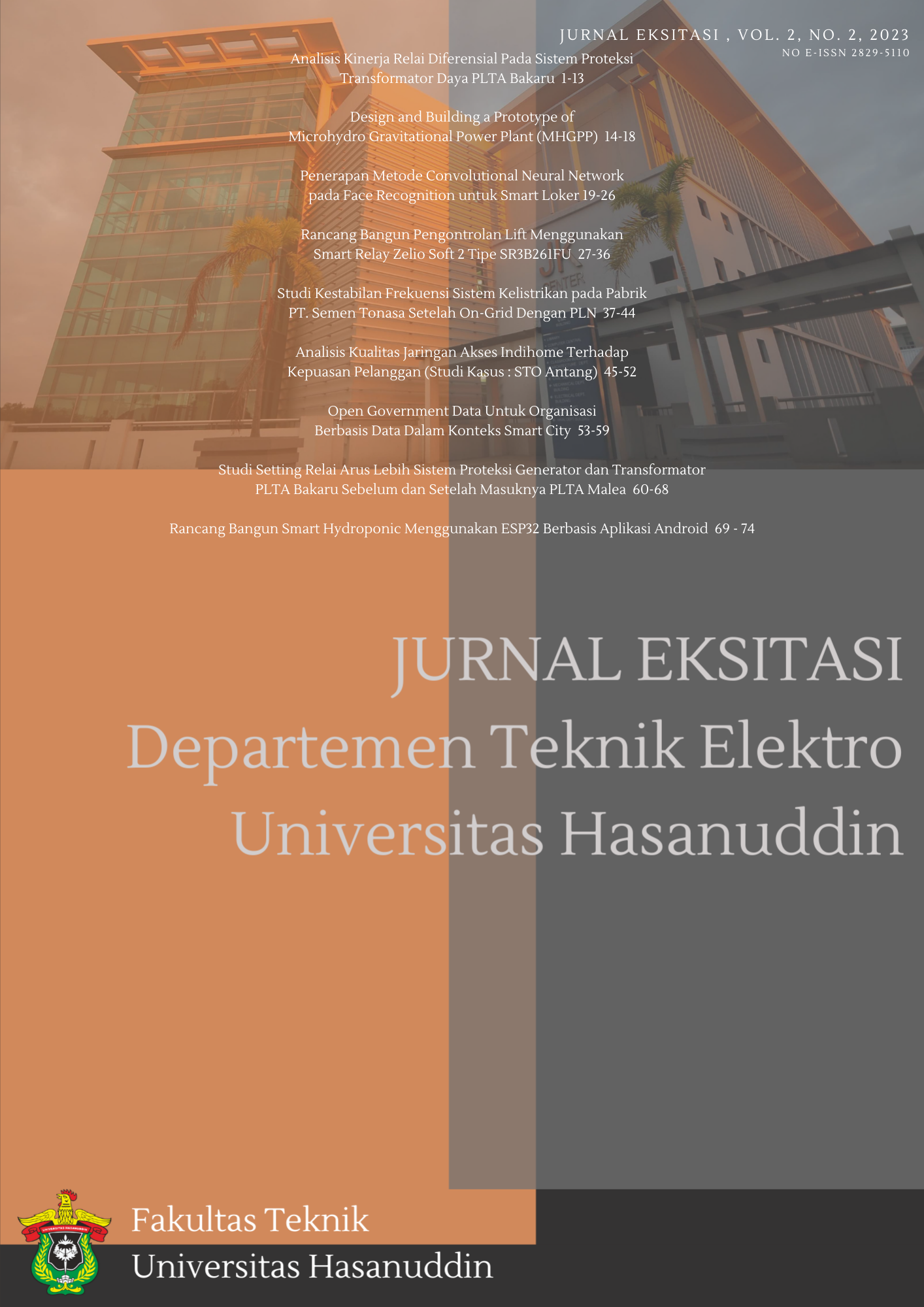Electrical System Frequency Stability Study at PT Factory. Semen Tonasa After On-Grid With PLN
Keywords:
PT. Semen Tonasa has switched to getting full supply from PLN from 2021 until now. On the other hand, as the largest cement producer in eastern Indonesia, PT. Semen Tonasa has motor loads that will affect frequency stability when connected to the system. Therefore, a frequency stability simulation was carried out using software to see how the system frequency responds when starting and releasing a large capacity motor. This research began with collecting data on PT's electrical system. Semen Tonasa, and the Sulbagsel system at the UIKL Sulawesi and UP2B Makassar offices. Data that includes motor and transformer load data at PT. Semen Tonasa, generator data, interbus, transmission line transformers, and Sulbagsel system loads are then input into the SLD that has been drawn in the application. The research then continued by carrying out frequency stability simulations with several scenarios. First Simulation, a power flow simulation was carried out in PT's electrical system. Semen Tonasa after being on-grid with PLN, the second simulation carried out a large capacity motor starting scenario, the third simulation carried out a large capacity motor disconnection scenario. The scenario results show the condition of all buses at PT. Semen Tonasa is in a stable condition after being on-grid with PLN to meet the permitted stress tolerance limits, namely -10% to 5%. When simulating starting a large capacity motor, the frequency drops to 49.924 Hz, this frequency is still within the permitted frequency limit. Apart from that, when starting 2 motors simultaneously the system frequency decreases to 49.875 Hz, and makes the system continue to oscillate but is still within the permitted frequency range. Then, when simulating the release of a large capacity motor, the frequency increased to 50,030 Hz, where the system frequency did not experience a significant increase. This shows that the system is able to maintain its stability when a disturbance occurs and is able to return to a new normal condition after the disturbance occurs, PT. Semen Tonasa, Frequency Stability, motor starting, motor releaseAbstract
PT. Semen Tonasa has switched to getting full supply from PLN from 2021 until now. On the other hand, as the largest cement producer in eastern Indonesia, PT. Semen Tonasa has motor loads that will affect frequency stability when connected to the system. Therefore, a frequency stability simulation was carried out using software to see how the system frequency responds when starting and releasing a large capacity motor. This research began with collecting data on PT's electrical system. Semen Tonasa, and the Sulbagsel system at the UIKL Sulawesi and UP2B Makassar offices. Data that includes motor and transformer load data at PT. Semen Tonasa, generator data, interbus, transmission line transformers, and Sulbagsel system loads are then input into the SLD that has been drawn in the application. The research then continued by carrying out frequency stability simulations with several scenarios. First Simulation, a power flow simulation was carried out in PT's electrical system. Semen Tonasa after being on-grid with PLN, the second simulation carried out a large capacity motor starting scenario, the third simulation carried out a large capacity motor disconnection scenario. The scenario results show the condition of all buses at PT. Semen Tonasa is in a stable condition after being on-grid with PLN to meet the permitted stress tolerance limits, namely -10% to +5%. When simulating starting a large capacity motor, the frequency drops to 49.924 Hz, this frequency is still within the permitted frequency limit. Apart from that, when starting 2 motors simultaneously the system frequency decreases to 49.875 Hz, and makes the system continue to oscillate but is still within the permitted frequency range. Then, when simulating the release of a large capacity motor, the frequency increased to 50,030 Hz, where the system frequency did not experience a significant increase. This shows that the system is able to maintain its stability when a disturbance occurs and is able to return to a new normal condition after the disturbance occursDownloads
Download data is not yet available.
Downloads
Published
2023-12-26
Issue
Section
Articles







